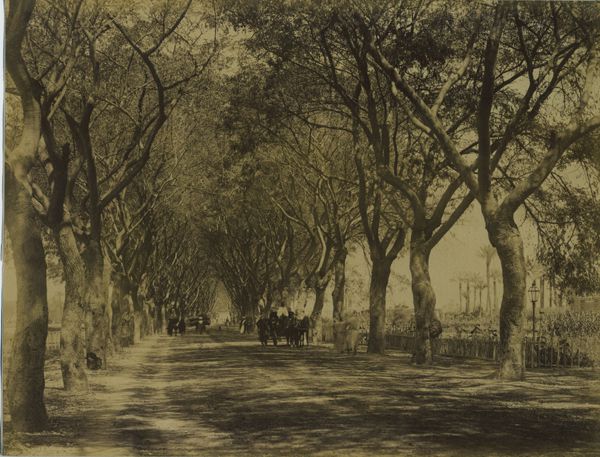Using a historic print from my own collection to introduce the albumen process
This small albumen print of a photograph of Egypt attributed to P. Sebah and Lekagian is one of my favorite photographs from my own very limited personal collection. It’s dated to 1883, and it looks fantastic for its age. Read on to learn more about the albumen process.

What is an albumen print?
Probably introduced around 1850 by Louis Désiré Blanquart-Evrard, albumen prints are among the earliest paper-based photographic prints produced, and among the most popular photographic prints of the 19th century. The light sensitive emulsion was made from a solution of egg whites and a soluble chloride such as ammonium. Photographers prepared their own emulsions and applied them to paper using directions that read much like cooking recipes.
Unlike many other types of early photographic prints, including daguerreotypes and tin types, albumen prints were printed from a negative, often a collodion glass contact negative. This meant many prints could be made from a single negative.
According to the Library of Congress reference on photographic prints, albumen prints “are characterized by a smooth, shiny surface, which is the result of a coating of egg whites (albumen). The color can vary a great deal depending upon the treatment given during processing, but most often it is purplish-brown.” Robert Sobieszek tells us the coloration of albumen prints depends on the paper substrate, chemical toning applied during or after fixing, and storage conditions of the print. In his words, the colors “of the albumen print can vary considerably—from a cold red-violet to an extremely warm reddish brown or sepia—the overall color of most is between these extremes.” Albumen prints were popular because they made stunning prints with vivid detail, subtle tonal range, and abundant shadow detail.
Even within a decade or two of its invention, the permanence of albumen prints was called into question. Imperfections in the fixing chemistry or process meant prints would fade and yellow rapidly. Even prints kept carefully stored for decades to prevent fading may be susceptible to damage if improperly displayed today.
By the turn of the century, the popularity of the albumen print had given way to other types of prints, including the silver print.
Learn more about albumen prints
To gain a more complete knowledge of albumen photographic prints, I recommend Wikipedia and Stanford University’s excellent online resource. To see many more images of albumen prints, see this page of Google images, or search the Library of Congress photographs.
Thanks for reading.
~ Keith

Maybe it’s just a poor digital reproduction or just the nature of digital reproduction, but your Sebah print does not look like an albumen print at all. It looks more like gelatin or collodion POP or maybe even a gelatin silver print. But of course I can’t be sure about anything since I haven’t seen the original. Otherwise, great work on the site and all the info!